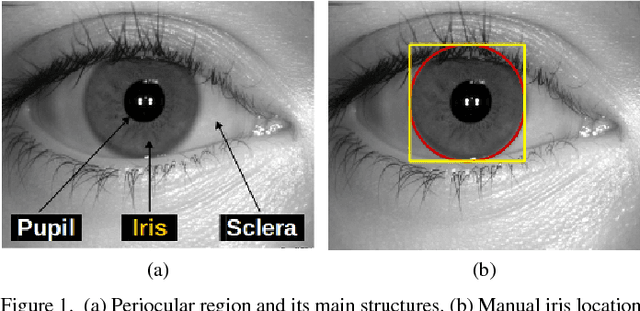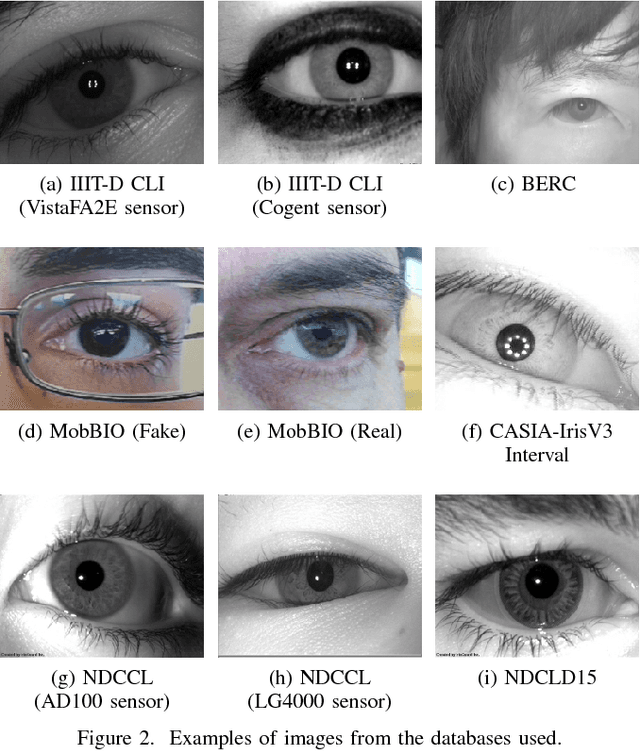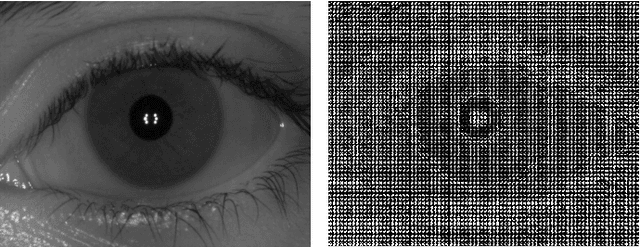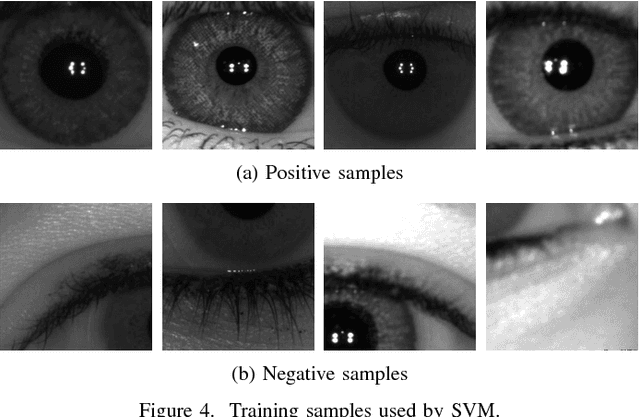Cides S. Bezerra
Robust Iris Segmentation Based on Fully Convolutional Networks and Generative Adversarial Networks
Sep 04, 2018



Abstract:The iris can be considered as one of the most important biometric traits due to its high degree of uniqueness. Iris-based biometrics applications depend mainly on the iris segmentation whose suitability is not robust for different environments such as near-infrared (NIR) and visible (VIS) ones. In this paper, two approaches for robust iris segmentation based on Fully Convolutional Networks (FCNs) and Generative Adversarial Networks (GANs) are described. Similar to a common convolutional network, but without the fully connected layers (i.e., the classification layers), an FCN employs at its end a combination of pooling layers from different convolutional layers. Based on the game theory, a GAN is designed as two networks competing with each other to generate the best segmentation. The proposed segmentation networks achieved promising results in all evaluated datasets (i.e., BioSec, CasiaI3, CasiaT4, IITD-1) of NIR images and (NICE.I, CrEye-Iris and MICHE-I) of VIS images in both non-cooperative and cooperative domains, outperforming the baselines techniques which are the best ones found so far in the literature, i.e., a new state of the art for these datasets. Furthermore, we manually labeled 2,431 images from CasiaT4, CrEye-Iris and MICHE-I datasets, making the masks available for research purposes.
A Benchmark for Iris Location and a Deep Learning Detector Evaluation
Apr 30, 2018



Abstract:The iris is considered as the biometric trait with the highest unique probability. The iris location is an important task for biometrics systems, affecting directly the results obtained in specific applications such as iris recognition, spoofing and contact lenses detection, among others. This work defines the iris location problem as the delimitation of the smallest squared window that encompasses the iris region. In order to build a benchmark for iris location we annotate (iris squared bounding boxes) four databases from different biometric applications and make them publicly available to the community. Besides these 4 annotated databases, we include 2 others from the literature. We perform experiments on these six databases, five obtained with near infra-red sensors and one with visible light sensor. We compare the classical and outstanding Daugman iris location approach with two window based detectors: 1) a sliding window detector based on features from Histogram of Oriented Gradients (HOG) and a linear Support Vector Machines (SVM) classifier; 2) a deep learning based detector fine-tuned from YOLO object detector. Experimental results showed that the deep learning based detector outperforms the other ones in terms of accuracy and runtime (GPUs version) and should be chosen whenever possible.
 Add to Chrome
Add to Chrome Add to Firefox
Add to Firefox Add to Edge
Add to Edge